The man who wrote Y the Last Man. The guy who drew incredible runs on Amazing Spider-Man and Batgirl: Year One. In 2013, they launched The Private Eye, a provocative sci-fi series set in a future without the internet. It just ended a few weeks ago, and you really should read it. If you need extra incentive to read great work by a team of some of modern comics’ best creators, consider this: you can get the whole run for as little as $US10. Heck, you don’t have to pay for any of it if you don’t want. But you really should.
Warning: Spoilers follow for the plot of The Private Eye.
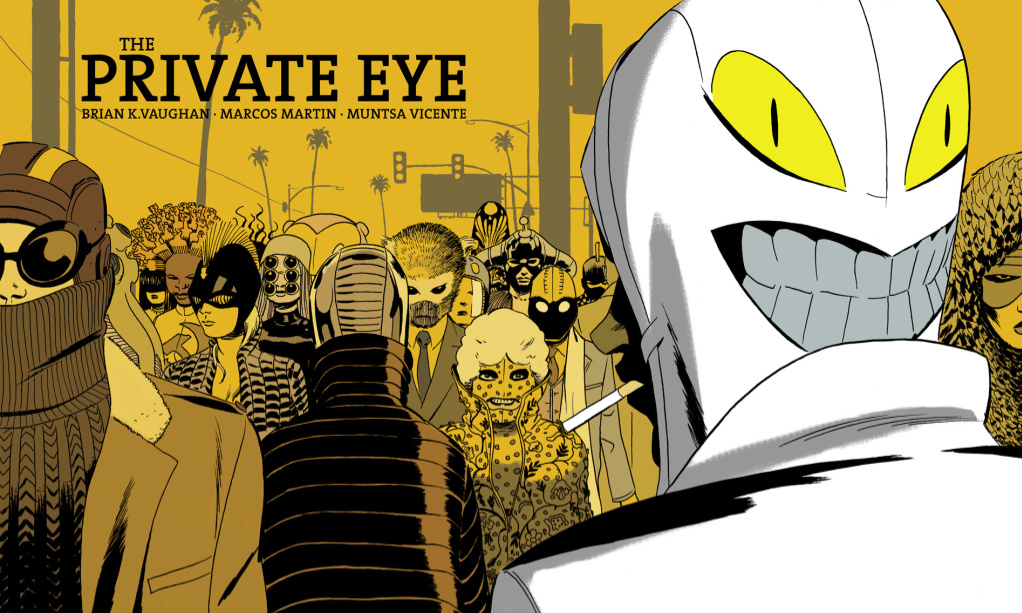
A world without any internet access probably sounds like a nightmare to most of us living in the year 2015. But it’s the lack of persistent virtual connectivity that makes the setting for The Private Eye so compelling. The series’ action happens in the Los Angeles of 2076, decades after a network catastrophe called the Cloud Burst unleashed a Flood of everyone’s once-private personal information out into the world.
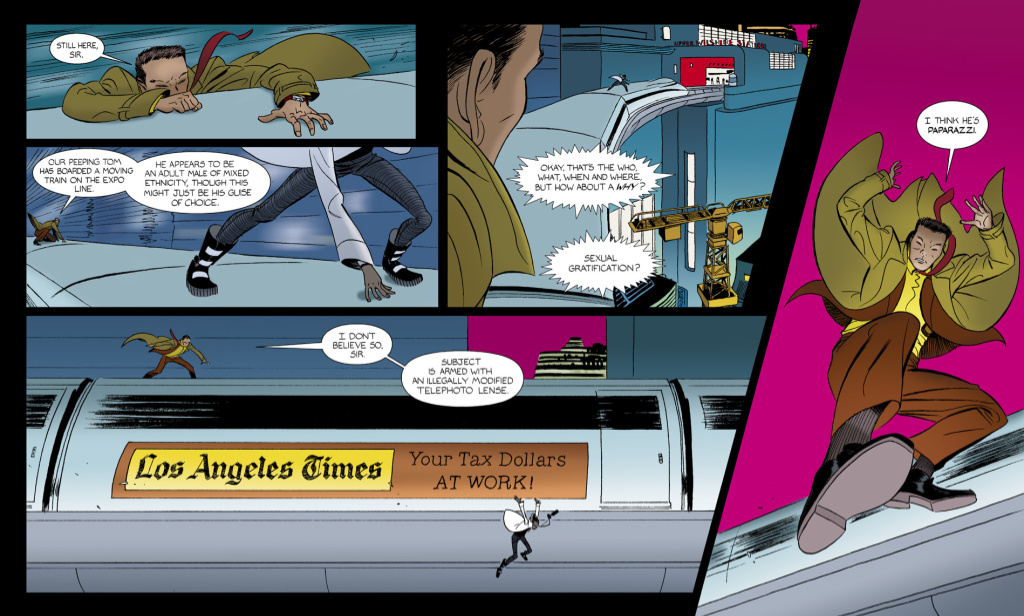
Journalism is now a law-enforcement function, carried out by uniformed and plainclothes government officers who report and publish the official version of events. The comics’ main character goes by the moniker P.I. and, after accepting a case to investigate a woman’s background, gets pulled into a conspiracy to bring back the internet.
The Private Eye is a digital comic. There is no print version. For a comic set in a world where personal computing as we know it pretty much disappears, there’s a bit of irony to TPE‘s pay-what-you-want, digitally-distributed, DRM-free business model. After all, The Private Eye wouldn’t be possible if not for the internet. The world wide web connects the L.A.-residing Vaughan to the Barcelona-based Martin and provides the fodder for the series’ subtext. It’s also formatted to be read in a widescreen, tablet-friendly format, too. Vaughan and Martin has repeatedly said that they don’t have plans to take The Private Eye to print and its horizontal presentation is probably a big reason why. This thing was built to live on the ‘net.
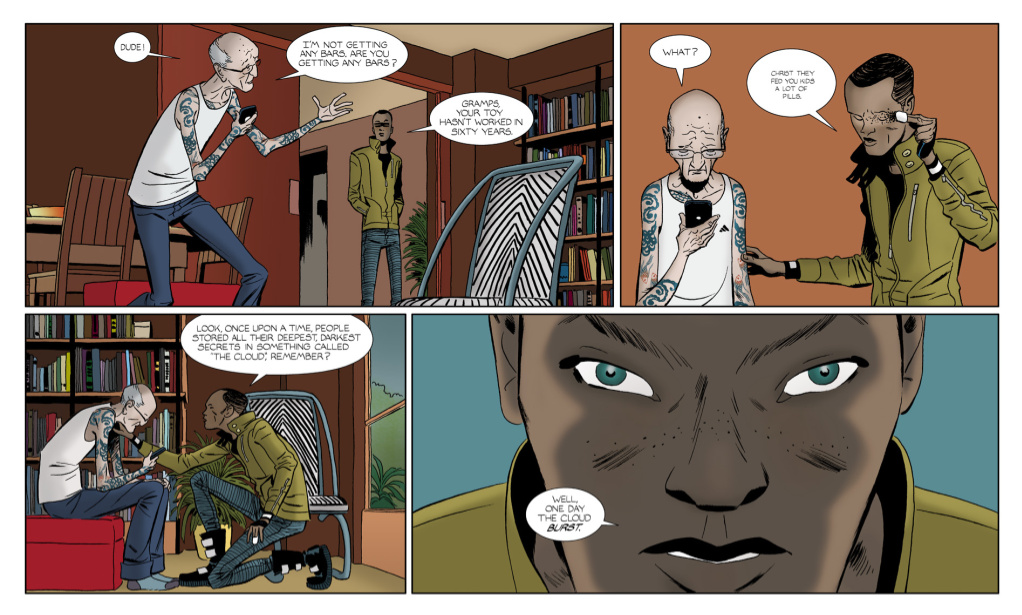
The mythology of the internet is hovering all over The Private Eye. The comic occurs after a time when people who weren’t supposed to see each other’s freaky fetishes, racist jokes and trollish rants were submerged in them. Now people in the comic’s world zealously hide almost every aspect of their lives when they’re out in public.
There was a good side to the internet, too. Sure enough, tThe main villain who wants to bring back the World Wide Web invokes the internet’s power to “topple dictatorships and liberate entire populations” and while he’s an egomaniac, he’s not wrong about that. You can feel the creators’ ambivalence about the Series of Tubes that funnel/channel/tangle so much of our modern lives. People in the real world can watch or share damn near anything they want. Twitter/Facebook/Instagram is great! But the dark shadow of that access is having it used against you. Twitter/Facebook/Instagram sucks!
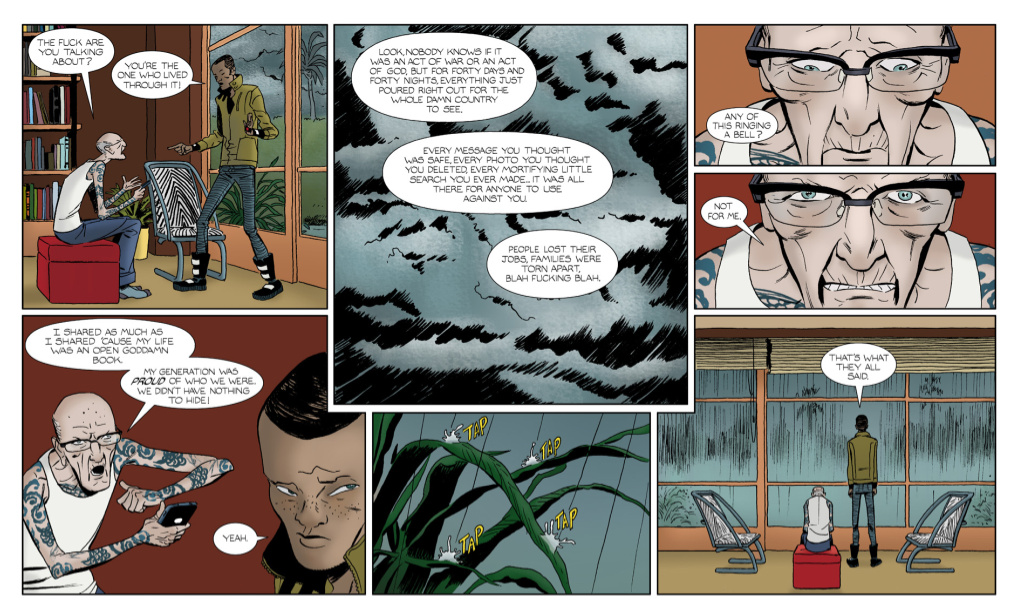
Vaughn and Martin aren’t just tapping into paranoid fears of the present for TPE‘s subtext. They’re also mining the ephemeral, ever-eroding collective memory of the past, too. Part of the readership of their series consists of a generation that can still remember chunky landline phones and analogue tape cassettes. They have seen the changes that the internet has wrought and felt the doubt and euphoria that instant, wideband communications can bring.
The Private Eye‘s milieu lets Marcos Martin spread his wings in spectacular style, letting him design an aesthetic for an entire paranoid reality. So, when a Cloud Burst happens, of course, people will hide their genders, racial backgrounds and other identifying characteristics. And it follows that personal secrecy becomes another premium that the wealthy have better access to. Because they’re outfits meant to hide the wearers’ identities in fantasy, the clothes in TPE can — and do — look like everything. Old WWI helmets, superhero domino masks, furry-inspired animal headpieces all show up on the streets of future Los Angeles. This series feels fashionable, one that fuses fancy and function. These crazy clothes and headgear look amazing but for all the wrong reasons. They hide and distract, serving as armour for people too afraid to let their real names and faces be seen and heard.
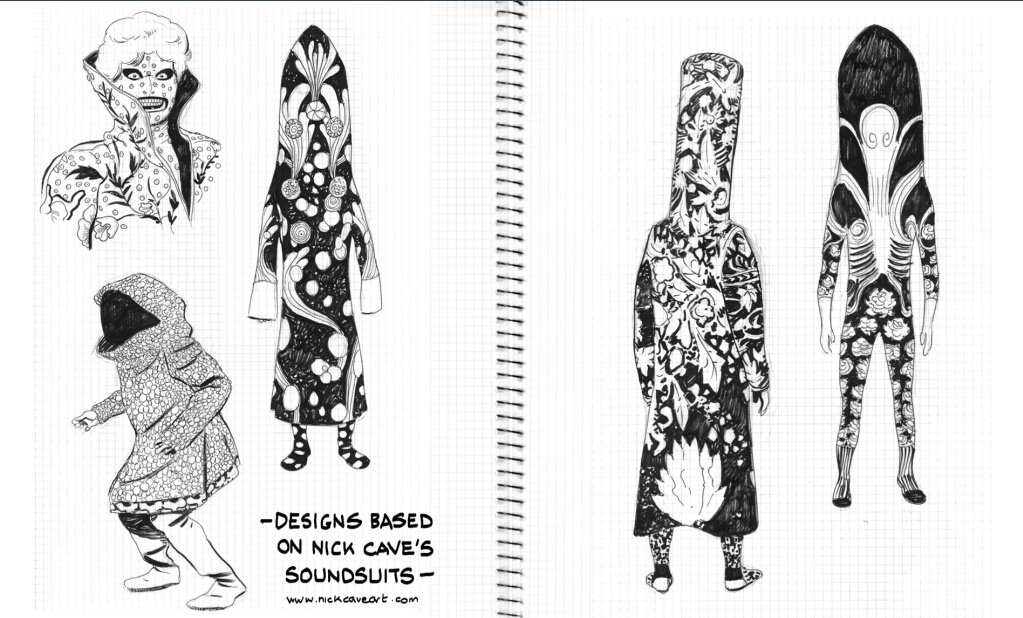
Colorist Muntsa Vicente is also a crucial part of the creative team, providing tonal shifts with colour choices. When the scene calls for it, Vicente makes the proceedings bloom with day-glo pop or brood with darker, smouldering swatches, sometimes within the same page.
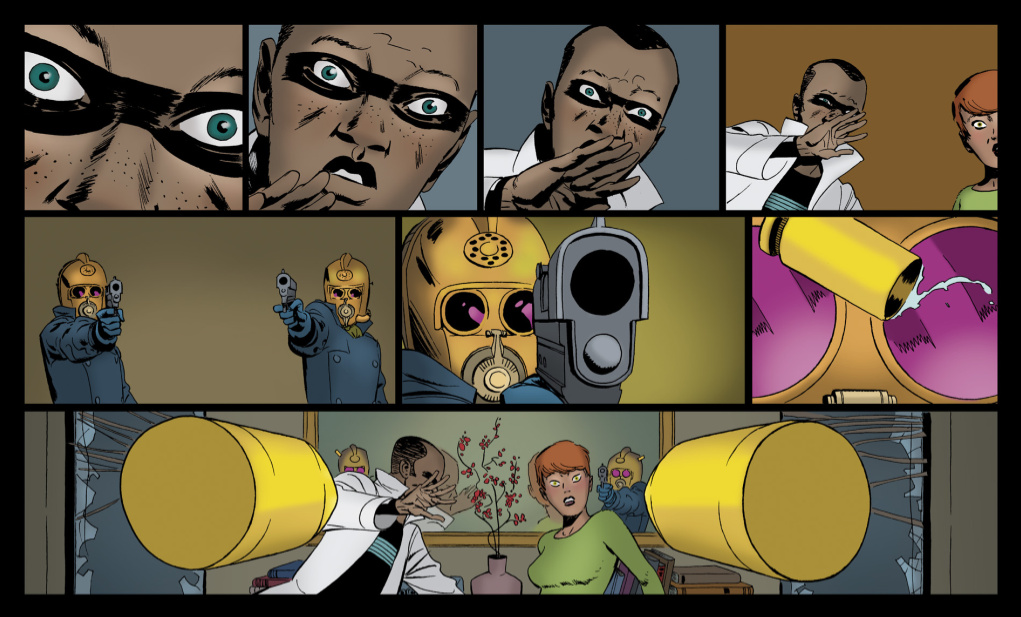
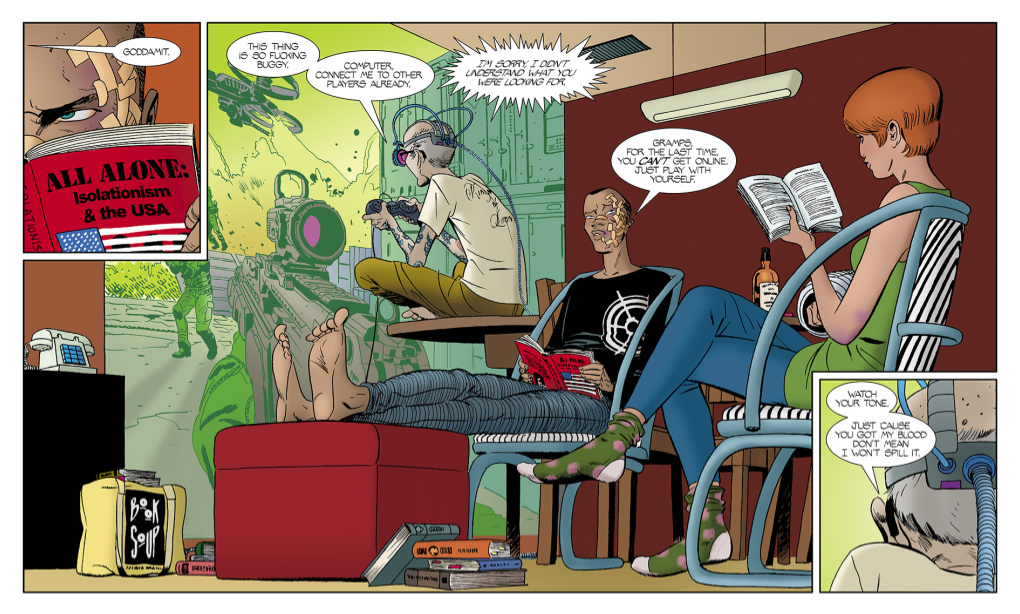
Los Angeles is an ancestral homeland for noir detective stories in literature and film, probably because it’s a place that trades in dreams and artifice. Part of the fun in reading the book is seeing all the visual signifiers that Martin uses to connect TPE to its noir genre forebears and receding elements of everyday life.
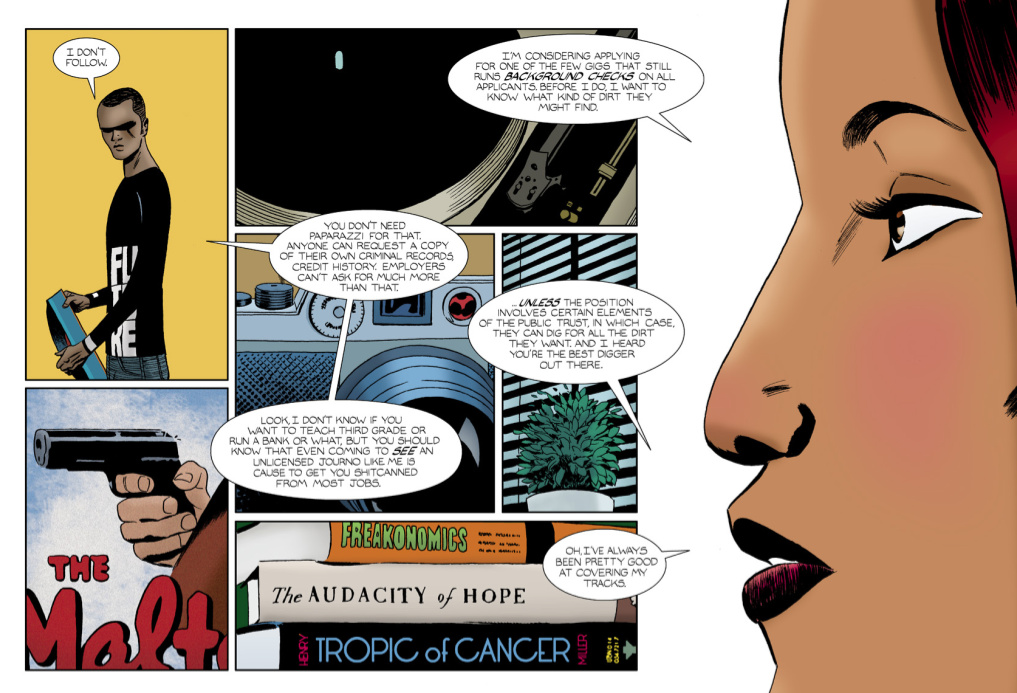
Magnetic cars and miraculous medical advances jostle up against cameras that use film, payphones and Sony Walkmans. It all illustrates how much forward and reverse change has happened in this world.
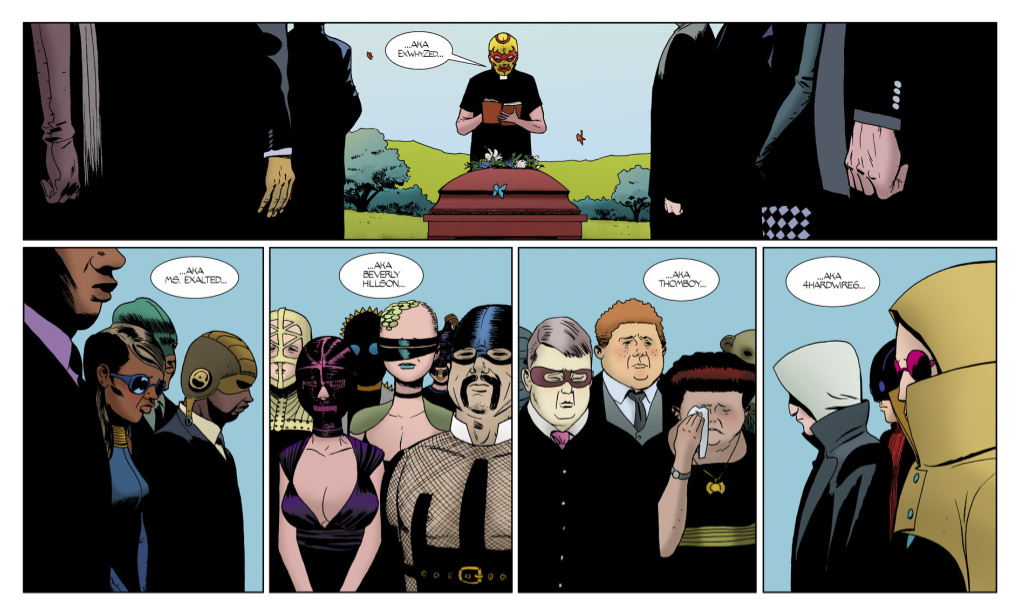
Vaughn’s always been one of the best in the comics business at cliffhangers and The Private Eye has a giant one at the end of it, centered on the fate of its lead character. But the series’ biggest unanswered question is a metatextual one: what is the internet doing to the way we formulate our identities? A flashback to the burial of the PI’s mother — where disparate tribes from her splintered life come to mourn her — illustrates this new multi-modal existence in excellent fashion. None of us are only ever just one thing. Being able to express those different parts of ourselves to welcoming communities is one of the best things about the internet. But the fear of losing control of those narratives is an ever-increasing phobia. Hyper-connectivity feels a bit like electricity, sunlight and oxygen now: a dangerous-in-excess necessity that we can’t live without. The Private Eye is a great fable about that conundrum.
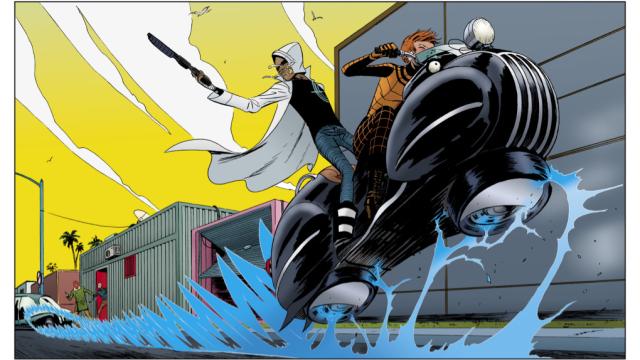
Comments
4 responses to “The Private Eye: A Damn Good Comic About How The Internet Changes Us”
You can get it real cheap, but I’m not gonna tell you where. You’re a real bro
From comments on the previous article linked to in this one, the link is: http://panelsyndicate.com/
A bit ridiculous that the link wouldn’t be in either article.
I figured the link wouldn’t be posted & scrolled straight down to the comments section (thx death_au).
Urgh, do I have to buy each one individually?
Vol #1 consists of 1-5,
Vol #2 will probably be released soon.
If you don’t want to buy each one individually just enter the price you want to pay for all 10 into vol1, then enter $0 in for each one after that.